Canal Holiday: Four Counties Ring
Audlem to Coven
4 to 6 June 2007
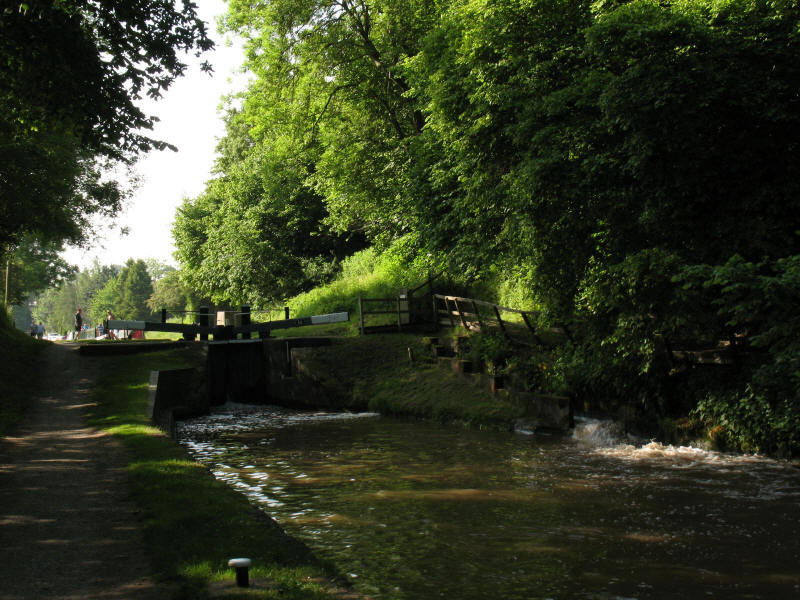
The bottom lock of the 15 locks in the Audlem flight
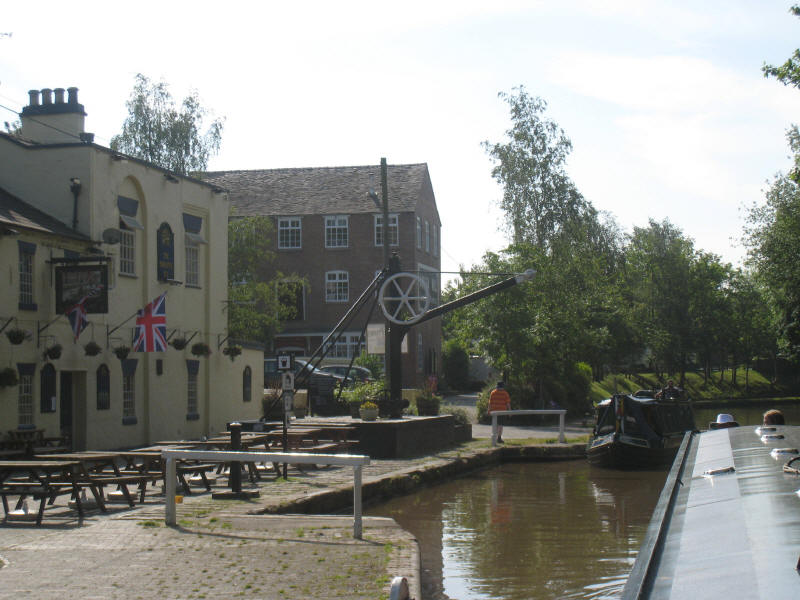
Stephen walks past the Shroppie Fly pub and the crane

Looking back down the flight from lock 6 - only 5 more to go.
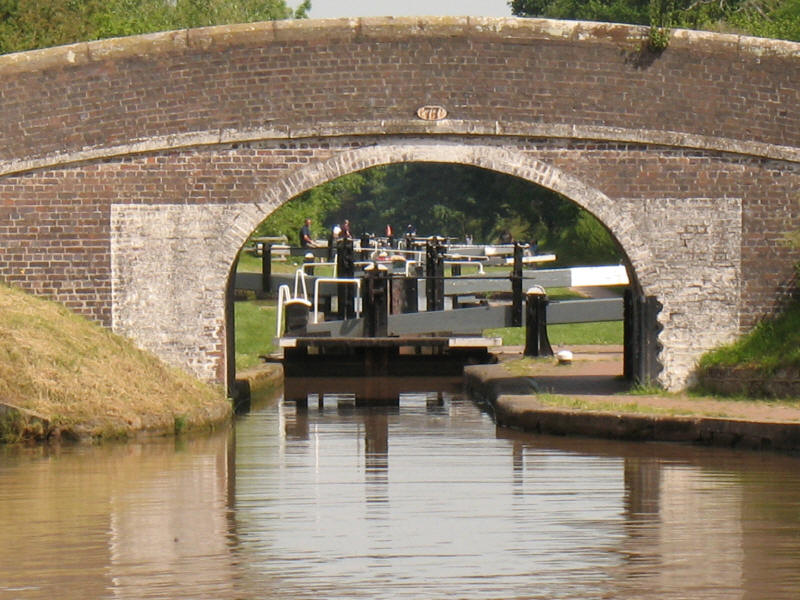
A close-up of the same view. One of the locks in the distance is Stephen and
Lucy's 1000th lock.
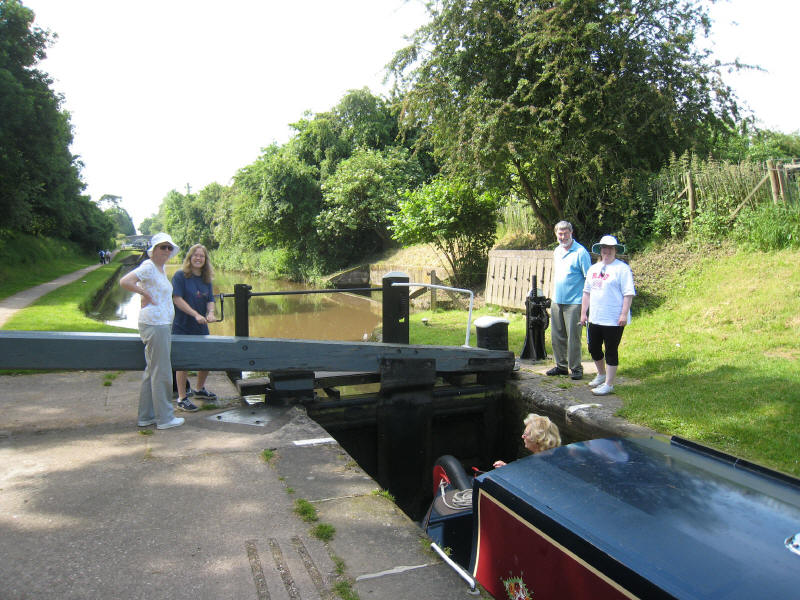
A happy looking bunch of lock-workers

Continuing to make our way up the Audlem flight

Having completed the 15 locks of the Audlem flight, it isn't far to the five
Adderley locks, then there is a longer gap before the five of the Tyrley flight.
These are preceded by an impressive rock cutting
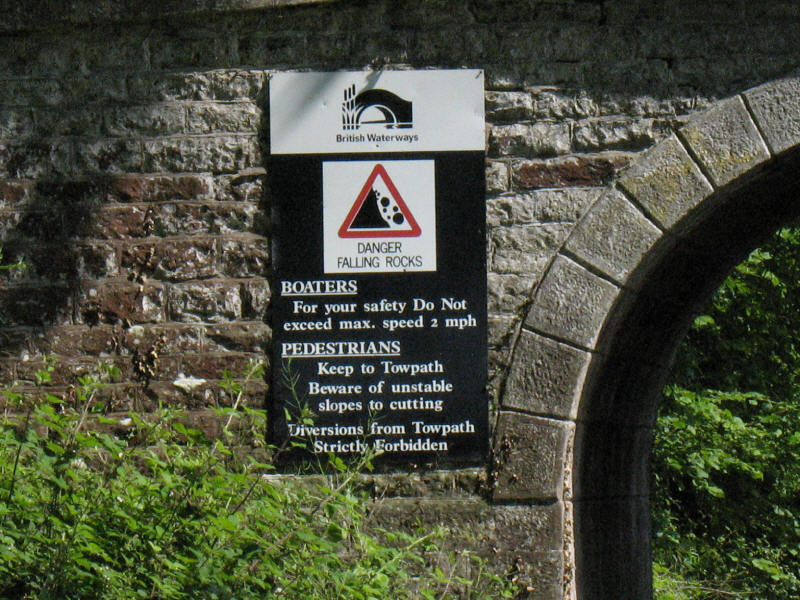
We then reach the first of the characteristic deep cuttings which are unique to
the Shropshire Union Canal. The sides of are steep and constantly slipping, the
canal shallow and narrow. The towpath is awful and should be avoided if
possible, or approached with very wet conditions in mind, and prepared to do
some tree and rock climbing at times.
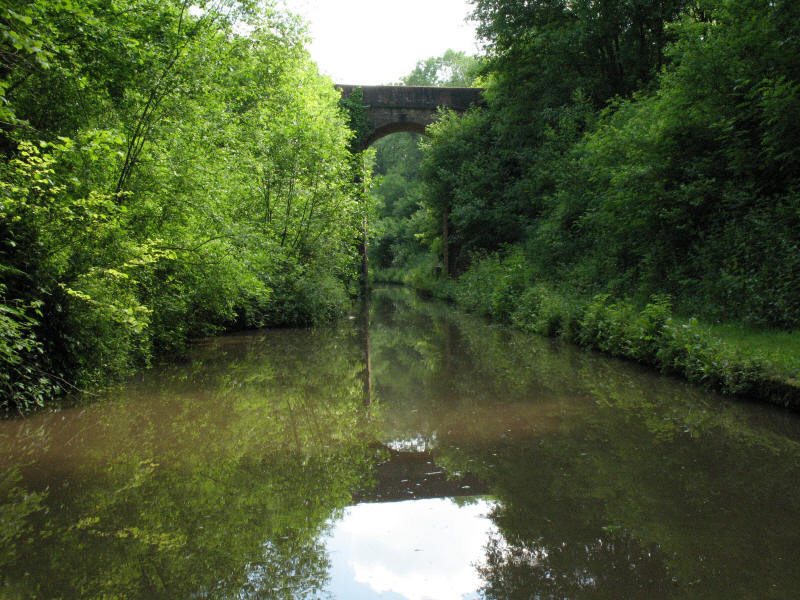
The photos don't quite do justice to Woodseaves Cutting. A high bridge gives
some hint at the depth of the cutting.
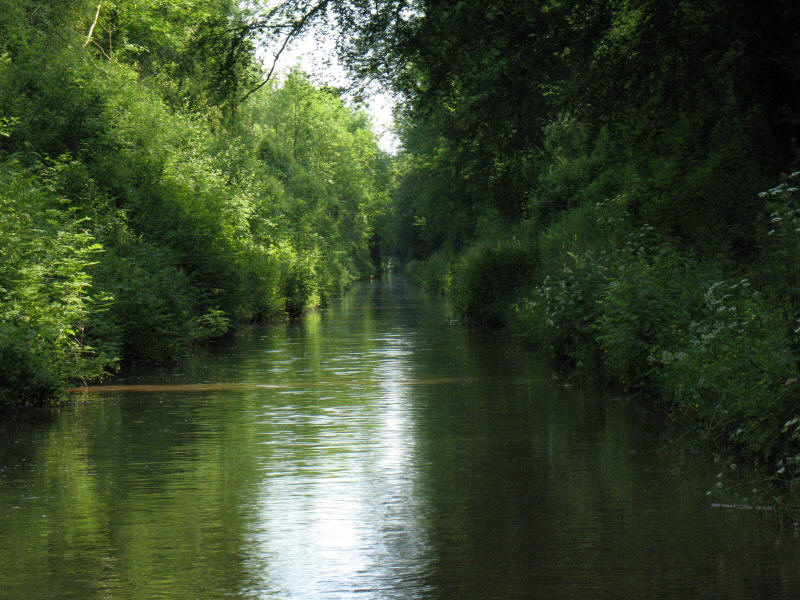
The long and green cutting.
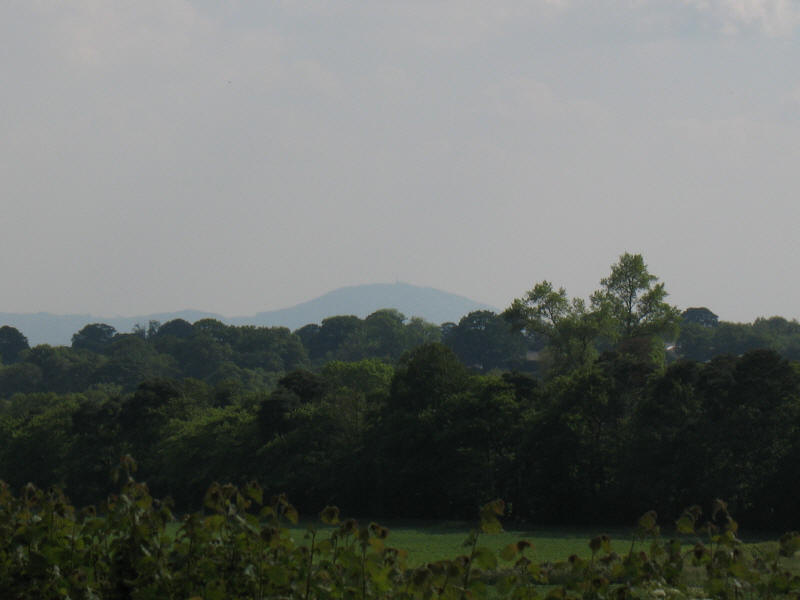
On emerging from the cutting, we can see a rather hazy
Wrekin on the horizon, which looms over
us for much of the afternoon.
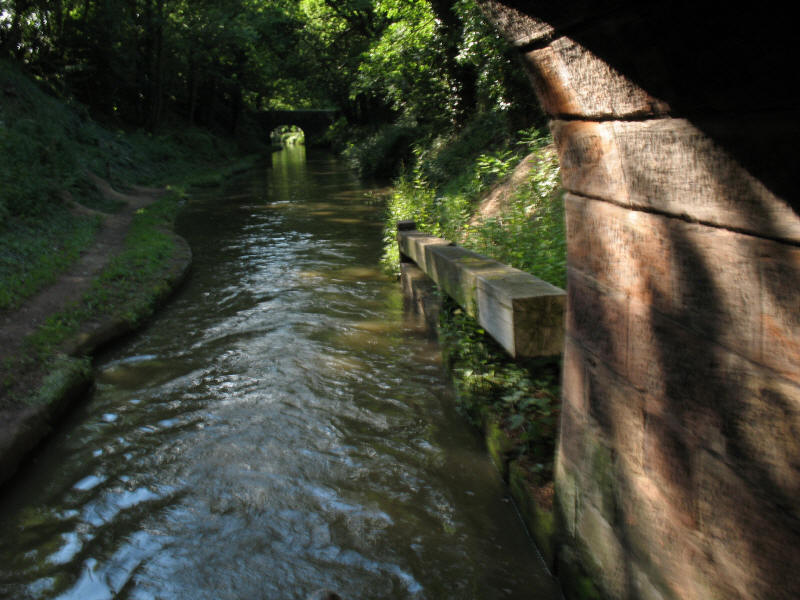
A stop gate as we move onto the Shebdon Embankment - the high embankments (for
their time) are equally characteristic of the Shropshire Union Canal
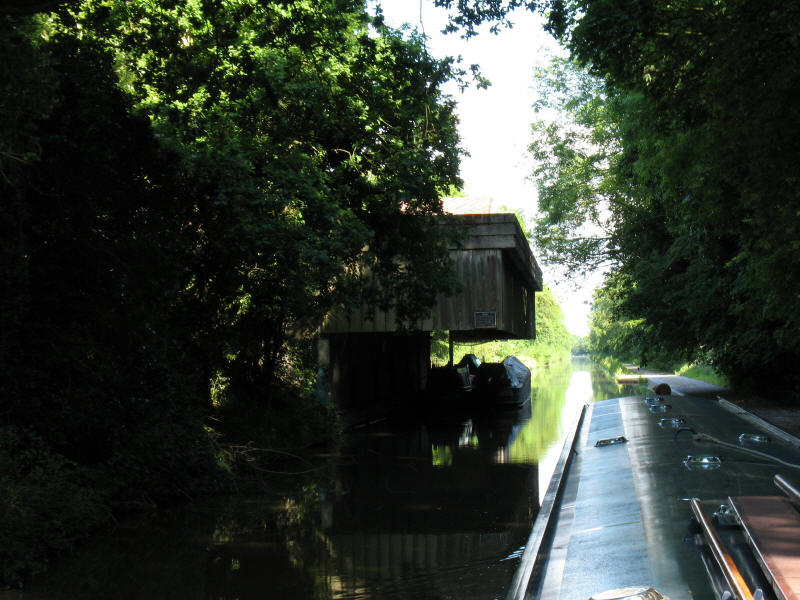
The covered loading area at the Knighton chocolate factory. It was opened in
1911: milk from the dairy farms hereabouts was brought here and mixed with cocoa
and chocolate crumb also brought by boat; the raw chocolate was taken by boat to
Bourneville in Birmingham to produce the end product. The last boat from
Knighton travelled in 1961, since when all transport has been by road.
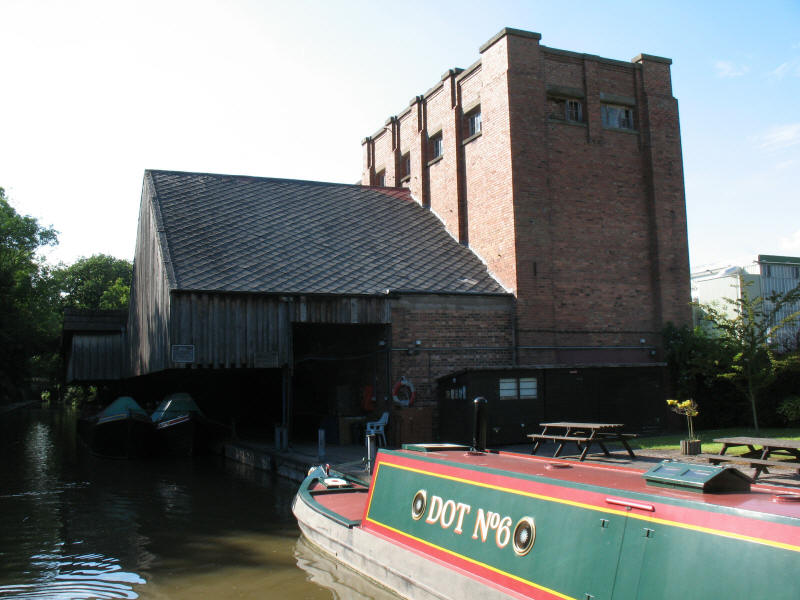
Looking back at the loading area; the modern factory can just be glimpsed
behind.
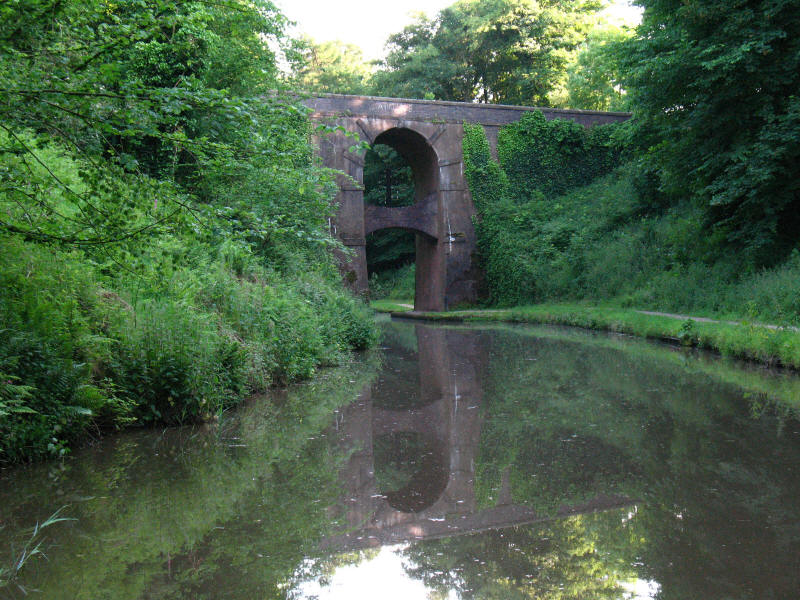
As we make our way through Grub Street Cutting, the double-arched bridge
carrying the A519 over the canal is a much photographed feature
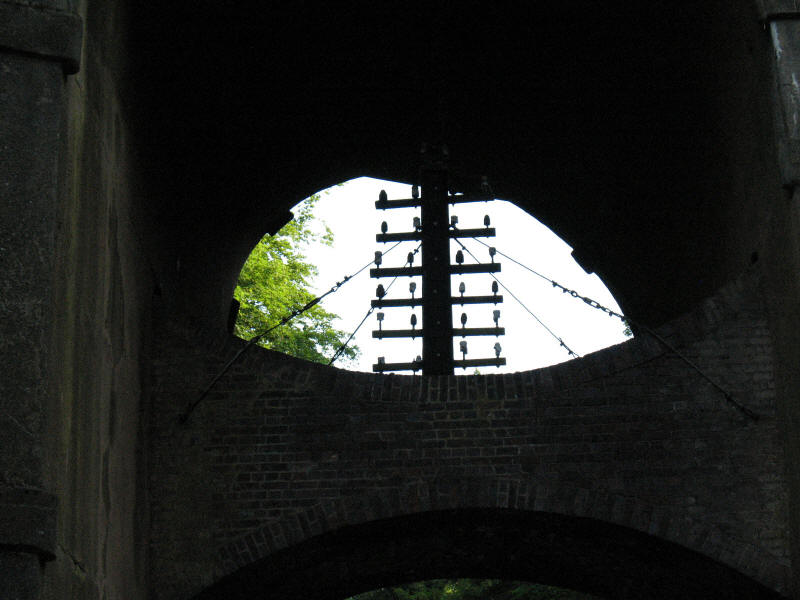
...in particular for the stump of a telegraph pole which still perches within
the bridge
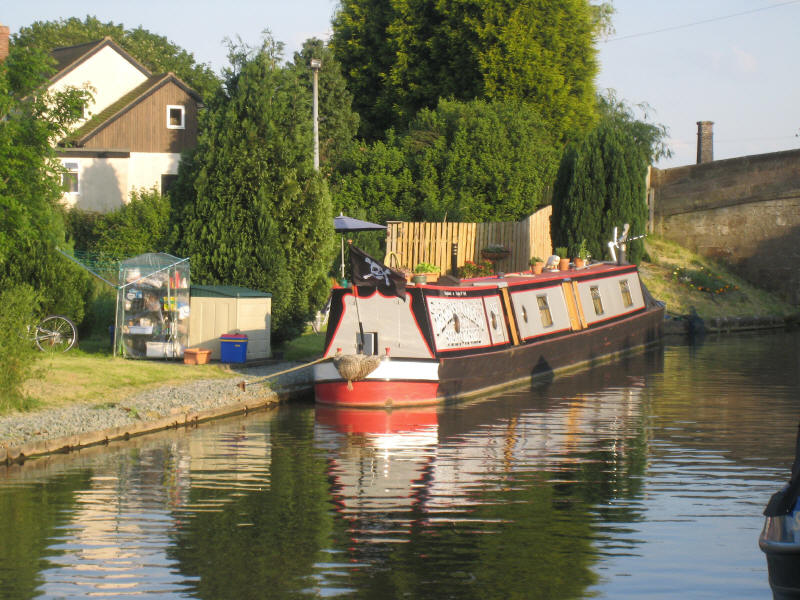
We moored at Norbury Junction, where the Newport Branch Canal used to head off
towards Newport and the Severn. Better watch out - pirates about!

An apparently pensive moment at the Junction Inn as we wait for our meals
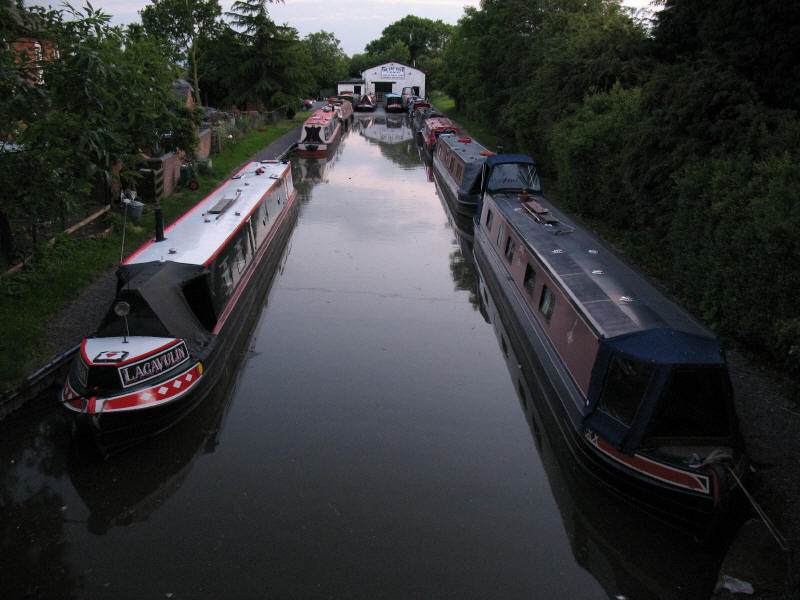
Looking along the remaining stub of the Newport Canal: the white building at the
end includes a dry dock made out of what was the first lock on the canal.
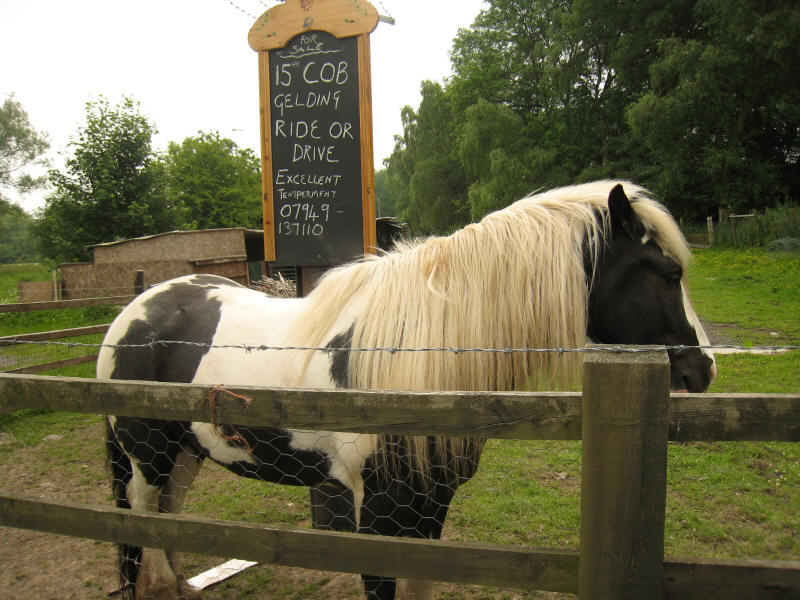
On Wednesday morning, we had only a short journey to reach Gnosall Heath, from
where it was a little walk through to Gnosall for our bellringing outing. On the
way we passed this cob for sale - it was gone when we passed back again.
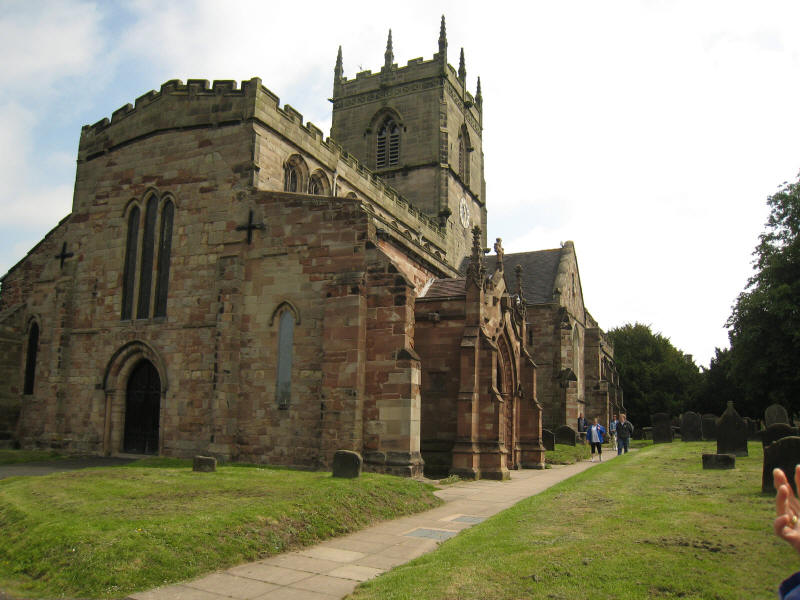
The church in Gnosall
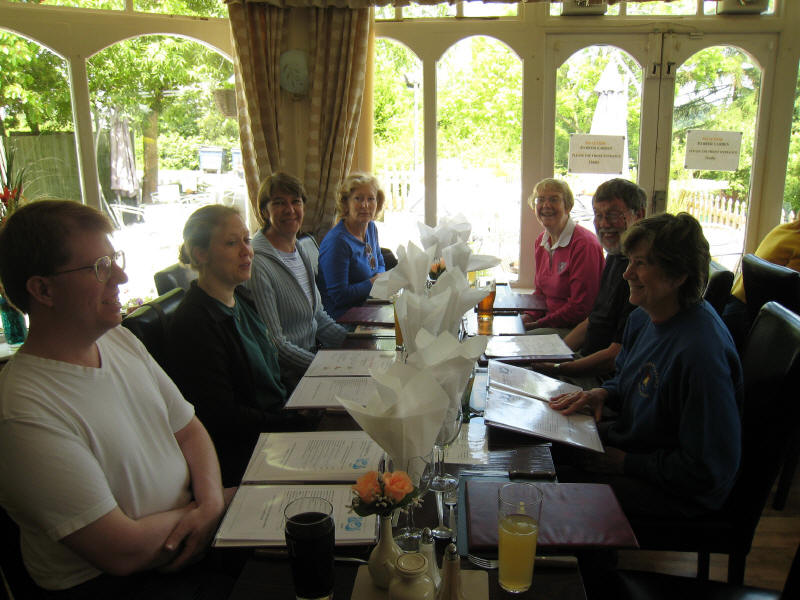
Lunch at The Navigation in Gnosall Heath. Very pleasant surroundings, but very
slow and the perceived quality of the food was mixed.

Just past Gnosall Heath is Cowley Tunnel. It is only 81 yards long, but is the
only tunnel on the mainline of the Shropshire Union Canal.
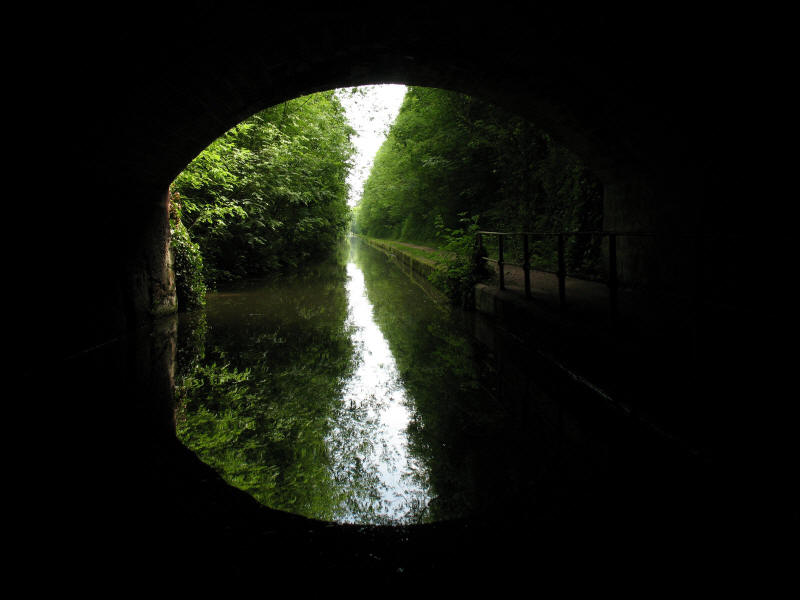
Emerging from the tunnel into the cutting. The tunnel was planned to be much
longer, but was opened out during construction due to the unstable rock.
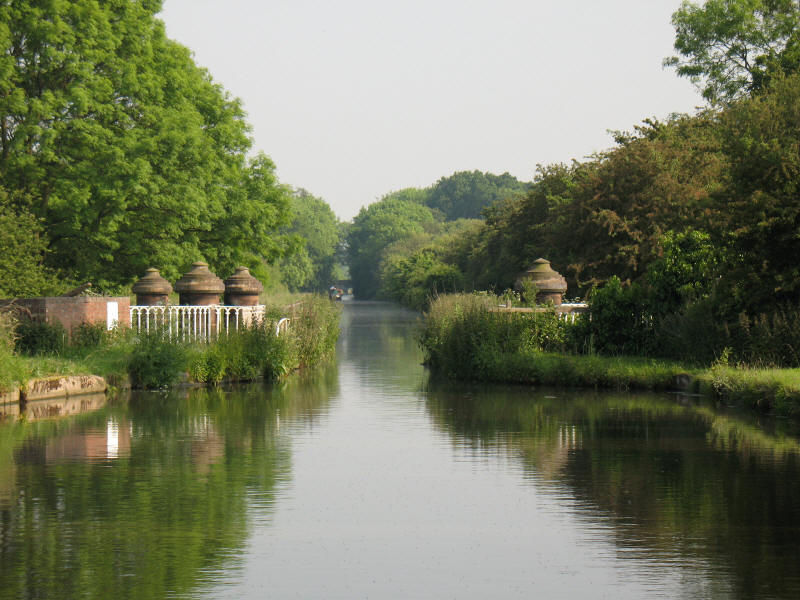
Approaching Stretton Aqueduct
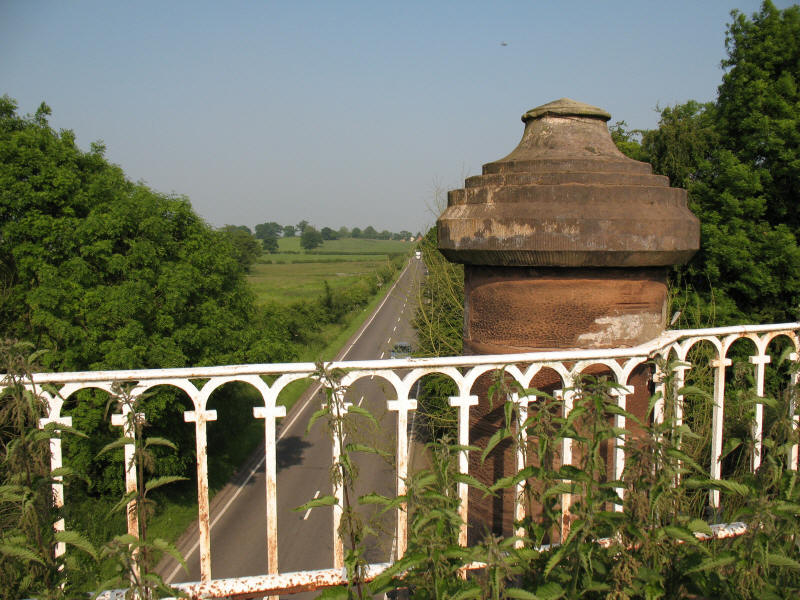
The aqueduct carries the canal over the Roman Watling Street, later Telford's
London to Holyhead road, and thus Telford's canal crosses Telford's road.

Sheila steers us safely across the aqueduct
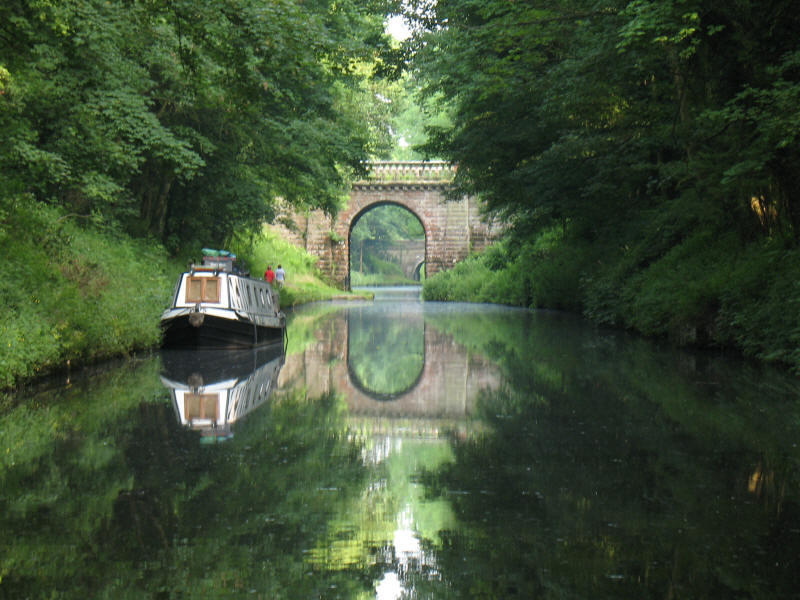
The ornately balustrated Avenue Bridge, which carries the road to Chillington
Hall
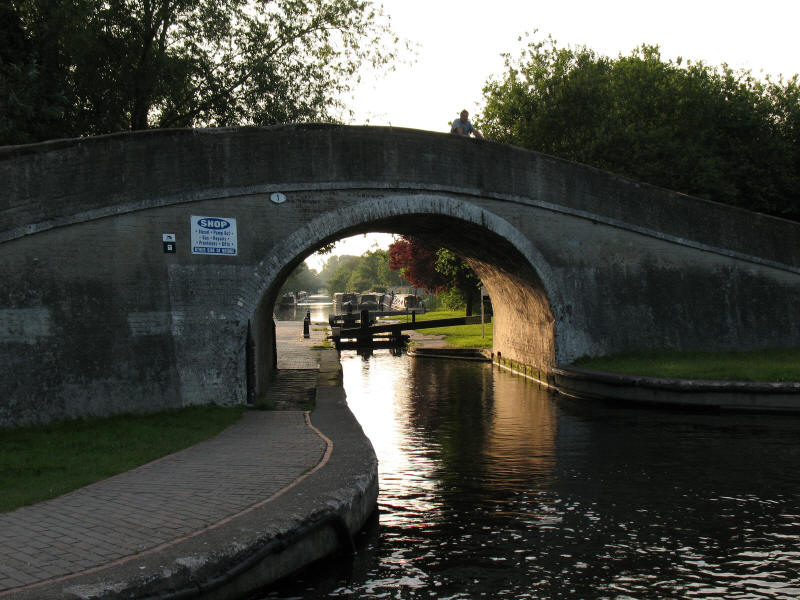
Reaching the end of the Shropshire Union Canal at Autherley Junction, we pass
through this stop lock and bridge number one, and then turn left onto the
Staffordshire and Worcestershire Canal.
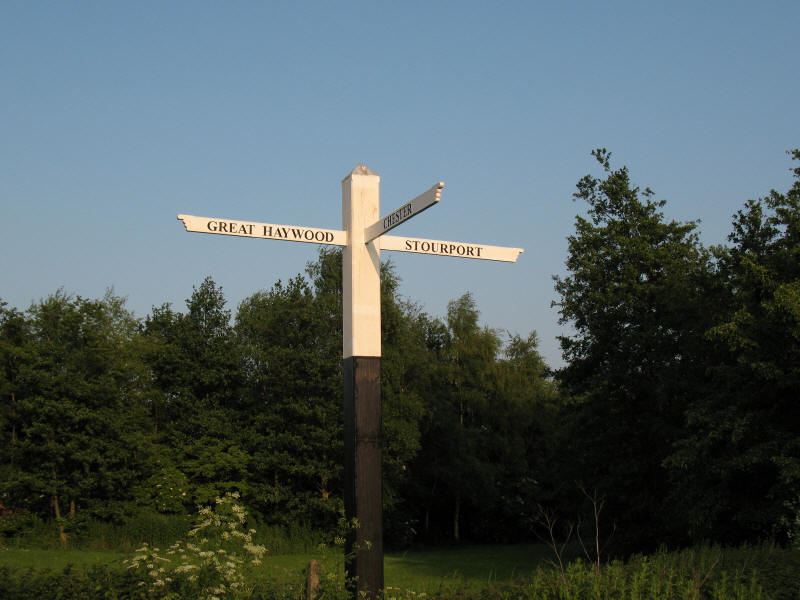
Great Haywood is the direction for us
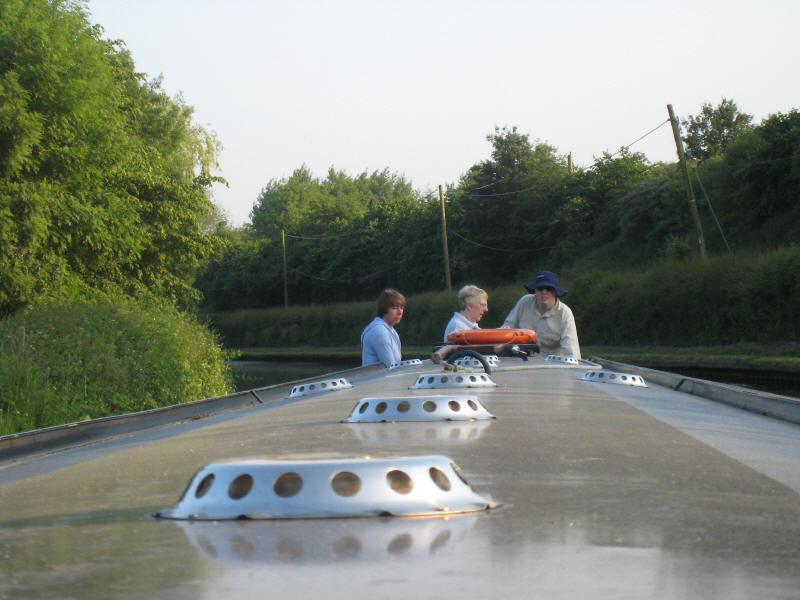
Stephen at the tiller as we seek to make our way clear of Wolverhampton, sewage
farms, industrial estates and dual carriageways for the night.
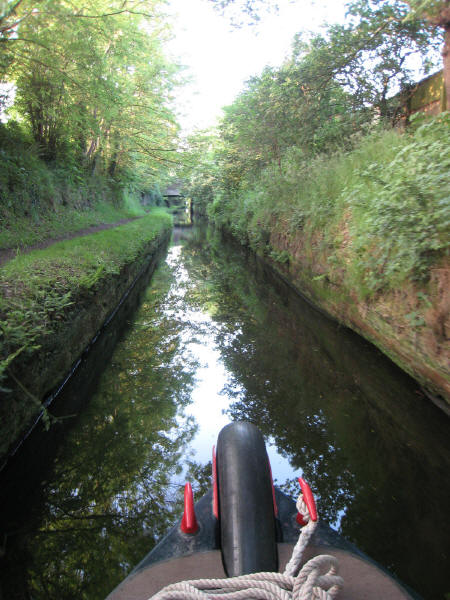
Making our way through Pendeford Rockin, a very narrow cutting through a belt of
sandstone. We moored for the night at Coven, just past The Anchor pub.
|